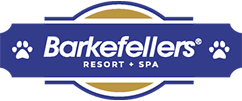If you’re a new puppy parent or parent-to-be, then this is the article for you! Read on for a few of our favorite basics and tips on how to effectively house train your puppy.
When and Where to Start House Training:
The recommended time frame to start house training your puppy is when they are between 12 – 16 weeks old. The amount of time it takes for a dog to be fully house trained varies depending on their size (smaller dog means smaller bladder!) and previous living conditions, so patience and understanding is key.
It is recommended that you put your puppy in a single defined space in the house at the beginning of their training, such as an area secured with baby gates, and gradually increase their access to the rest of the home as they learn to use the bathroom outside. For example, you could start with a fenced in area in the kitchen, then graduate to the entire kitchen, etc. as progress is made.
Our Top House Training Tips:
Consistency is Key
- When house training, it is important that you keep your dog on a regular bathroom and feeding schedule. A standard bathroom schedule could look something like taking your dog out first thing in the morning, right before bed at night, and every 30 minutes to 1 hour throughout the day. Similarly, giving your pup their meals at the same time each day will also make their bathroom use more regular. Simply put, a consistent everyday routine will make the process easier for both of you!
What to Do Outside
- Take your dog to the same spot outside each time they relieve themselves as the scent will encourage them to do their business. It is also a good idea to pick a special word or phrase that can be used to signal to them when it’s time to use the bathroom.
Positive Reinforcement
- Use rewards and positive reinforcement every time your dog uses the bathroom outside. Verbal praise, treats, or a walk around the neighborhood are all good incentives.
Accidents are Part of the Process
- If you catch your dog relieving themself inside, interrupt them, make a loud noise (but do not startle them), and then take them outside immediately. If you find an accident after the fact, it is too late to administer a correction. It is also important to remember that positive reinforcement is always a better option than outright punishment, as punishment teaches a dog to fear you and fear using the bathroom in front of you.
Crate Training
- If crate training, please make sure to do plenty of research to ensure you are doing it correctly and in a manner that is most effective and comfortable for the dog. For example, make sure that the crate is large enough for your dog to comfortably move around but not large enough for them to use the restroom in. If your dog will be in the crate for more than a few hours, ensure that someone (such as a family member or professional pet-sitter) is available to give them regular breaks and water access throughout the day.



